
The performing arts are arts such as music, dance, and drama which are performed for an audience. It is different from visual arts, which is when artists use paint, canvas or various materials to create physical or static art objects. Performing arts include a range of disciplines which are performed in front of a live audience, including theatre, music, and dance.

Chhattisgarh is a landlocked and heavily forested state located in the region of Central India. Formerly part of Madhya Pradesh it was granted statehood on 1 November 2000. It is the 9th-largest state in India, with an area of 135,192 km2 (52,198 sq mi). As of 2021, it has a population of roughly 30 million, making it the 17th most populated state in the country.

The Blackfoot Confederacy, Niitsitapi or Siksikaitsitapi, is a historic collective name for linguistically related groups that make up the Blackfoot or Blackfeet people: the Siksika ("Blackfoot"), the Kainai or Blood, and two sections of the Peigan or Piikani – the Northern Piikani (Aapátohsipikáni) and the Southern Piikani. Broader definitions include groups such as the Tsúùtínà (Sarcee) and A'aninin who spoke quite different languages but allied with or joined the Blackfoot Confederacy.
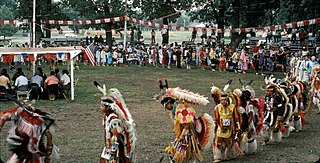
A pow wow is a sacred social gathering held by many North American indigenous communities. A modern pow wow is a specific type of event for Native American people to meet and dance, sing, socialize, and honor their cultures. Pow wows may be private or public. There is generally a dancing competition, with many types of traditional dances, often with significant prize money awarded. Pow wows vary in length from a one-day event, to major pow wows called for a special occasion which can be up to one week long.
The traditional culture of Samoa is a communal way of life based on Fa'a Samoa, the unique socio-political culture. In Samoan culture, most activities are done together. The traditional living quarters, or fale (houses), contain no walls and up to 20 people may sleep on the ground in the same fale. During the day, the fale is used for chatting and relaxing. One's family is viewed as an integral part of a person's life. The aiga or extended family lives and works together. Elders in the family are greatly respected and hold the highest status, and this may be seen at a traditional Sunday umu.

Madhya Pradesh is a state of India. Music from the area includes rural folk and tribal music, ceremonial and ritual music and Indian classical music. Unlike in many parts of India, the people of Madhya Pradesh place few restrictions on who can sing which songs. With the exception of some ritualistic works, people sing songs from across ethnic and racial boundaries.

Fancy dance, Pan-Indian dancing, Fancy Feather or Fancy War Dance is a style of dance some believe was originally created by members of the Ponca tribe in the 1920s and 1930s, in an attempt to preserve their culture and religion. It is loosely based on the War dance. Fancy dance was considered appropriate to be performed for visitors to reservations and at "Wild West" shows. But today, fancy dancers can be seen at many powwows across the nation and even the world.
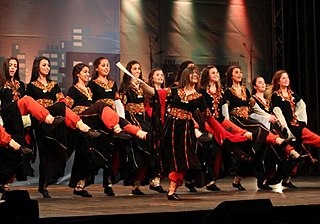
Dabke is a Levantine folk dance. Dabke combines circle dance and line dancing and is widely performed at weddings and other joyous occasions. The line forms from right to left and leader of the dabke heads the line, alternating between facing the audience and the other dancers. In English, it can be transcribed as dabka, dabki, dabkeh.
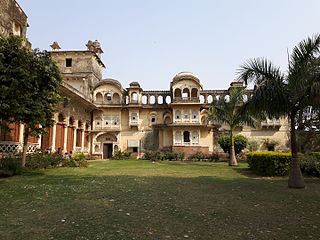
Sheopur श्योपुर is a city in Madhya Pradesh state of central India. It is the administrative headquarters of Sheopur District. Sheopur is linked by narrow gauge rail to Gwalior(No longer in operation). The town is traditionally famous for its wood carving. Chambal River is just 25 km, which forms the boundary between Rajasthan and MP states.
The dance forms of Andhra Pradesh take on a wide variety of colors, costumes, and types; and involve different settings and musical instruments.Generally it includes very bright and attractive colours.

Karnataka has a variety of traditional arts, including folk dance and puppetry.

Dance in China is a highly varied art form, consisting of many modern and traditional dance genres. The dances cover a wide range, from folk dances to performances in opera and ballet, and may be used in public celebrations, rituals and ceremonies. There are also 56 officially recognized ethnic groups in China, and each ethnic minority group in China also has its own folk dances. Outside of China, the best known Chinese dances today are the Dragon dance and the Lion dance.

A kuisi is a Native American fipple flute made from a hollowed cactus stem, with a beeswax and charcoal powder mixture for the head, with a thin quill made from the feather of a large bird for the mouthpiece. Seagull, turkey and eagle feathers are among the feathers commonly used.

Reog or Réyog is a traditional Indonesian dance in an open arena that serves as folk entertainment, contains magical elements, the main dancer is a lion-headed person with a peacock feather decoration, plus several masked dancers and Kuda Lumping. Reog is one of the performing arts from the northwestern region of East Java and Ponorogo is the region where Reog originated. The city gate of Ponorogo is decorated with warok and gemblak, two characters who were present at the time when Reog is performed. Reog is one of Indonesian culture that is still very strong with mystical elements and mysticism.
Several folk dance forms evolved in different regions of Odisha, Odissi and Chhau being some popular forms. Sambalpuri dance is most popular dance of western Odisha.

Charkula is a dance performed in the Braj region of Uttar Pradesh.

Folk dance of Mexico, commonly known as baile folklorico or Mexican ballet folk dance, is a term used to collectively describe traditional Mexican folk dances. Ballet folklórico is not just one type of dance, it encompasses each region's traditional dance that has been influenced by their local folklore and has been entwined with ballet characteristics to be made into a theatrical production. Each dance represents a different region in Mexico illustrated through their different zapateado, footwork, having differing stomps or heel toe points, and choreography that imitates animals from their region such as horses, iguanas, and vultures.
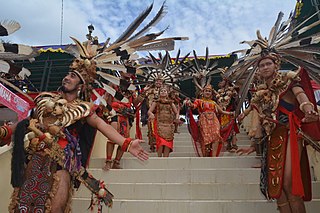
Ngajat is popular family of dances among the Iban people in Sarawak, Malaysia; Temburong, Brunei and West Kalimantan, Indonesia.
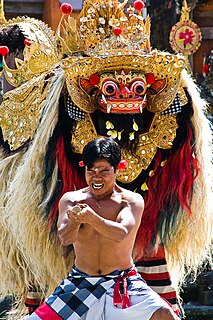
Barong dance is a style of traditional Balinese and Javanese dance from Bali and Java. The dance demonstrates about the mythological depiction of animals that have supernatural powers and could protect humans. Barong is the king of the spirits, leader of the hosts of good, and enemy of Rangda, the demon queen and mother of all spirit guarders in the mythological traditions of Bali. The Barong dance featured battle between Barong and Rangda to represent the eternal battle between good and evil.
















